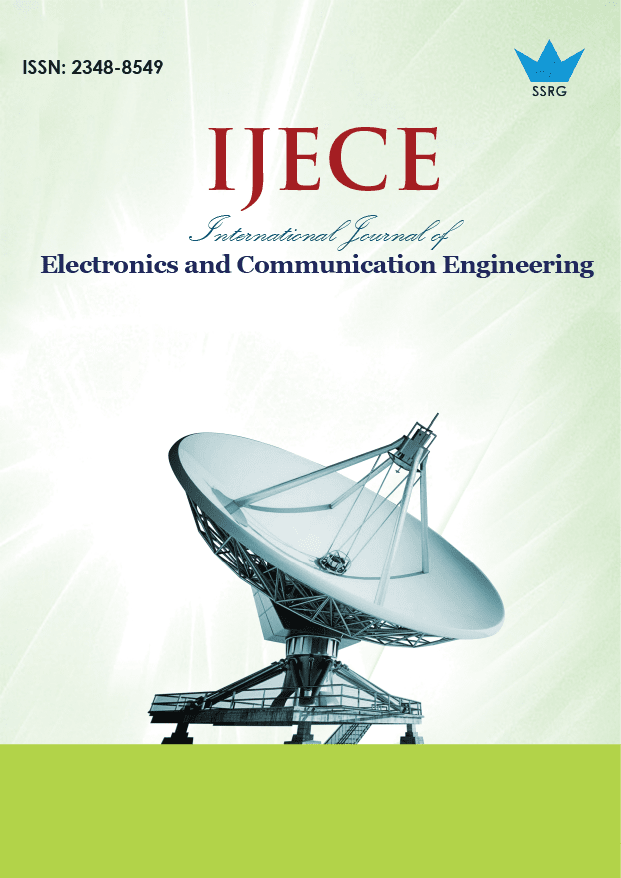A Reliable Environment with Extensive Advanced Encryption Standard Algorithm in Cloud Computing

| International Journal of Electronics and Communication Engineering |
| © 2025 by SSRG - IJECE Journal |
| Volume 12 Issue 1 |
| Year of Publication : 2025 |
| Authors : E. Geetha Rani, Chetana Tukkoji |
How to Cite?
E. Geetha Rani, Chetana Tukkoji, "A Reliable Environment with Extensive Advanced Encryption Standard Algorithm in Cloud Computing," SSRG International Journal of Electronics and Communication Engineering, vol. 12, no. 1, pp. 129-139, 2025. Crossref, https://doi.org/10.14445/23488549/IJECE-V12I1P110
Abstract:
Web-based Cloud Computing is widely used to store data. Most firms who are shifting to the cloud find it cost-effective. Despite its popularity, it has presented several security concerns to its users. Cloud Computing data security has become a critical issue that requires prompt response. This paper proposes an appropriate usage of AES and an effective cloud-based data storage solution. The proposed data security solution is implemented by improving the standard AES algorithm. Furthermore, the proposed techniques use de-duplication to save storage space for user data. The Extensive Advanced Encryption Standard (EAES) methodology was applied, and the results were superior to the conventional Advanced Encryption Standard method. The research tries to tackle the issues stated above in stages. Initially, a broad library of strategies addressing the data security problem is explored, and their limitations are noted. The Extensive Advanced Encryption normal technology is used, yielding considerable results compared to the normal Advanced Encryption Standard approach.
Keywords:
EAES, Security, Cloud Computing, AES.
References:
[1] A.E. Adeniyi et al., “Implementation of a Block Cipher Algorithm for Medical Information Security on Cloud Environment: Using Modified Advanced Encryption Standard Approach,” Multimedia Tools and Applications, vol. 82, pp. 20537-20551, 2023.
[CrossRef] [Google Scholar] [Publisher Link]
[2] Bijeta Seth et al., “Integrating Encryption Techniques for Secure Data Storage in the Cloud,” Transactions on Emerging Telecommunications Technologies, vol. 33, no. 4, 2022.
[CrossRef] [Google Scholar] [Publisher Link]
[3] Hyo-jun Lee et al. “De-Identification and Privacy Issues on Bigdata Transformation,” 2020 IEEE International Conference on Big Data and Smart Computing (BigComp), Busan, Korea (South), pp. 514-519, 2020
[CrossRef] [Google Scholar] [Publisher Link]
[4] Fursan Thabit et al., “A New Lightweight Cryptographic Algorithm for Enhancing Data Security in Cloud Computing,” Global Transitions Proceedings, vol. 2, no. 1, pp. 91-99, 2021.
[CrossRef] [Google Scholar] [Publisher Link]
[5] Arijit Ukil, Debasish Jana, and Ajanta De Sarkar, “A Security Framework in Cloud Computing Infrastructure,” International Journal of Network Security & Its Applications, vol. 5, no. 5, pp. 1-14, 2013.
[CrossRef] [Google Scholar] [Publisher Link]
[6] Noha MM. AbdElnapi, Fatma A. Omara, and Nahla F. Omran, “A Hybrid Hashing Security Algorithm for Data Storage on Cloud Computing,” International Journal of Computer Science and Information Security, vol. 14, no. 4, pp. 175-181, 2016.
[Google Scholar] [Publisher Link]
[7] Simona Samardjiskam, and Danilo Gligoroski, “An Encryption Scheme based on Random Split of St-Gen Codes,” 2016 IEEE International Symposium on Information Theory (ISIT), Barcelona, Spain, pp. 800-804, 2016.
[CrossRef] [Google Scholar] [Publisher Link]
[8] Dustin Moody, and Ray Perlner, “Vulnerabilities of "McEliece in the World of Escher",” 7th International Workshop Post-Quantum Cryptography, Fukuoka, Japan, pp. 104-117, 2016.
[CrossRef] [Google Scholar] [Publisher Link]
[9] Lidong Chen et al., “Report on Post-Quantum Cryptography,” National Institute of Standards and Technology, 2016.
[CrossRef] [Google Scholar] [Publisher Link]
[10] Colin Ting Si Xue, and Felicia Tiong Wee Xin, “Benefits and Challenges of the Adoption of Cloud Computing in Business,” International Journal on Cloud Computing: Services and Architecture, vol. 6, no. 6, pp. 1-15, 2016.
[CrossRef] [Google Scholar] [Publisher Link]
[11] Namje Park, and Namhi Kang, “Mutual Authentication Scheme in Secure Internet of Things Technology for Comfortable Lifestyle,” Sensors, vol. 16, no. 1, pp. 1-16, 2015.
[CrossRef] [Google Scholar] [Publisher Link]
[12] Nabeel Zanoon, “Toward Cloud Computing: Security and Performance,” International Journal on Cloud Computing: Services and Architecture, vol. 5, no. 5, pp. 17-26, 2015.
[CrossRef] [Google Scholar] [Publisher Link]
[13] L. Arockiam, and S. Monikandan, “Data Security and Privacy in Cloud Storage using Hybrid Symmetric Encryption Algorithm,” International Journal of Advanced Research in Computer and Communication Engineering, vol. 2, no. 8, pp. 3064-3070, 2013.
[Google Scholar] [Publisher Link]
[14] Vikas Goyal, and Chander Kant, “An Effective Hybrid Encryption Algorithm for Ensuring Cloud Data Security,” Big Data Analytics: Proceedings of CSI 2015, Singapore, pp. 195-210, 2018.
[CrossRef] [Google Scholar] [Publisher Link]
[15] Joseph Henry Anajemba et al., “Improved Advanced Encryption Standard with a Privacy Database Structure for IoT Nodes,” 2020 IEEE 9th International Conference on Communication Systems and Network Technologies (CSNT), Gwalior, India, pp. 201-206, 2020.
[CrossRef] [Google Scholar] [Publisher Link]
[16] Lin Teng et al., “A Modified Advanced Encryption Standard for Data Security,” International Journal of Network Security, vol. 22, no. 1, pp. 112-117, 2020.
[Google Scholar] [Publisher Link]

 10.14445/23488549/IJECE-V12I1P110
10.14445/23488549/IJECE-V12I1P110